Sig Sauer Scorpion 1911 Review
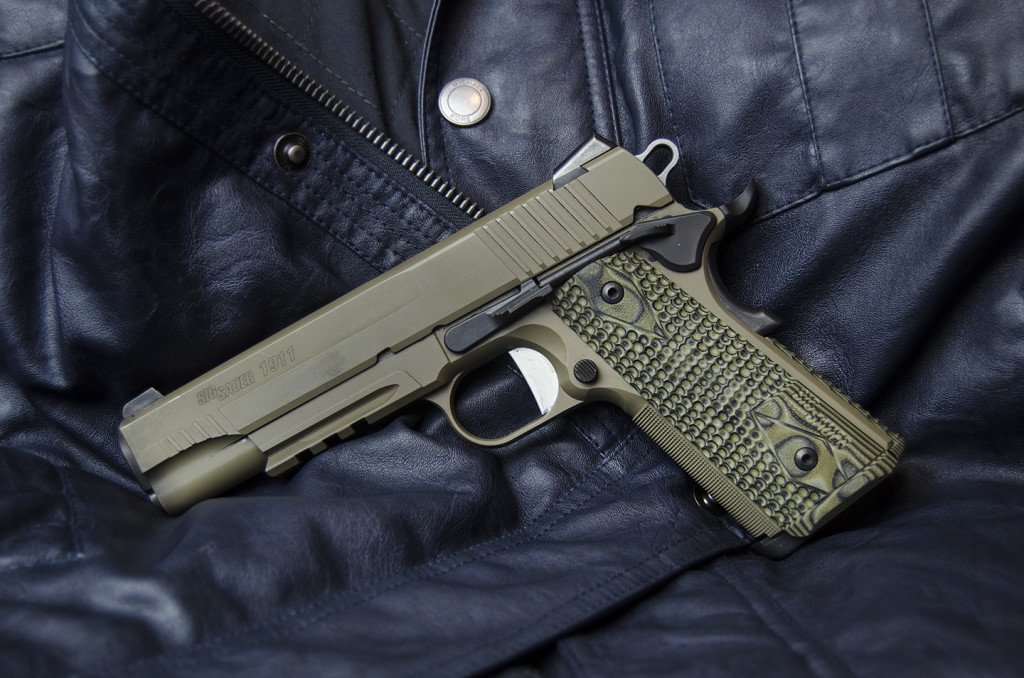 The Sig Sauer Scorpion 1911: JMB Would be Proud
The Sig Sauer Scorpion 1911: JMB Would be Proud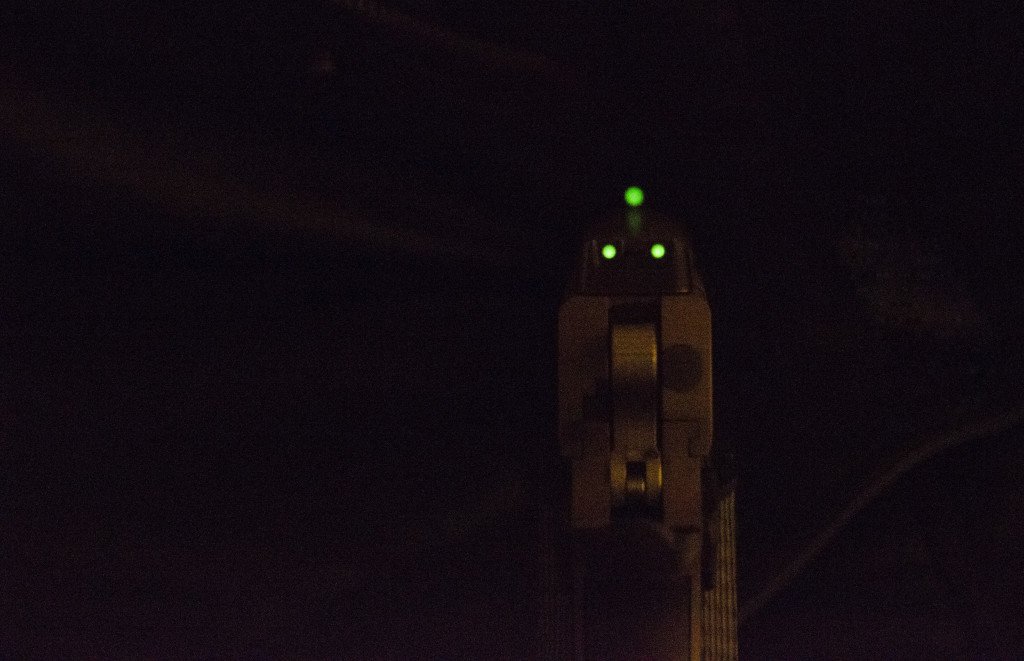
The model M1911 handgun was developed at the turn of the century in order to replace service revolvers with a semi-automatic alternative. Anyone who’s a fan of firearms 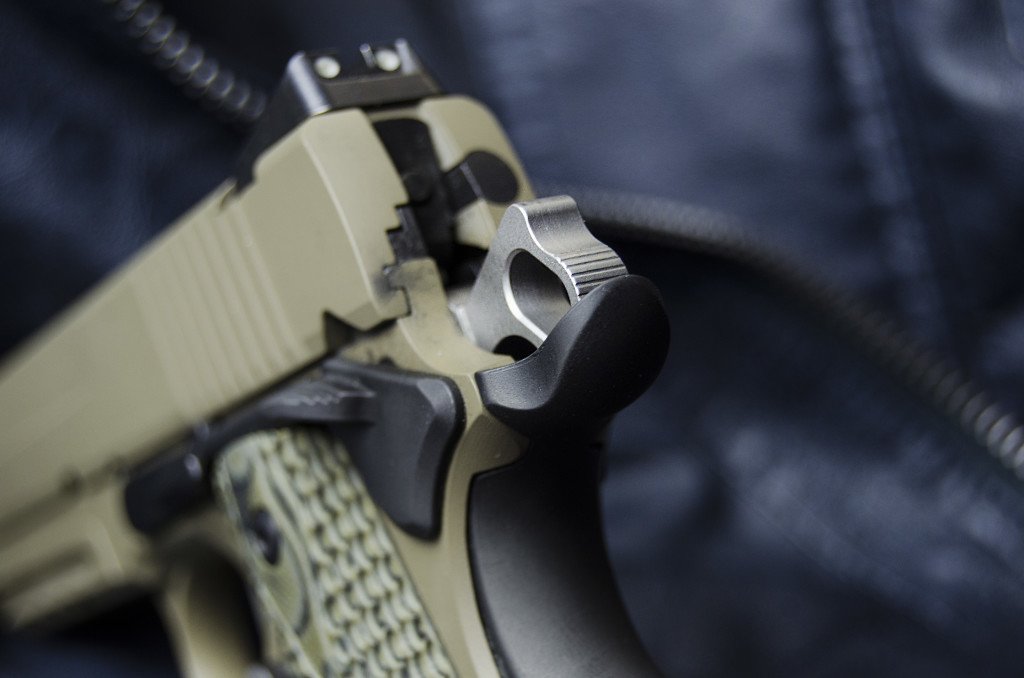 knows that John Moses Browning (JMB) was the originator of this revolutionary design. The 1911 remains one of the most popular handguns in the world over 100 years after the first model was assembled. All-steel construction and a crisp single-action trigger make it one of the most pleasant handgun designs to shoot- 1911 fandom is almost a religion to a lot of folks. A classic 1911 fires the .45 Automatic Colt
knows that John Moses Browning (JMB) was the originator of this revolutionary design. The 1911 remains one of the most popular handguns in the world over 100 years after the first model was assembled. All-steel construction and a crisp single-action trigger make it one of the most pleasant handgun designs to shoot- 1911 fandom is almost a religion to a lot of folks. A classic 1911 fires the .45 Automatic Colt 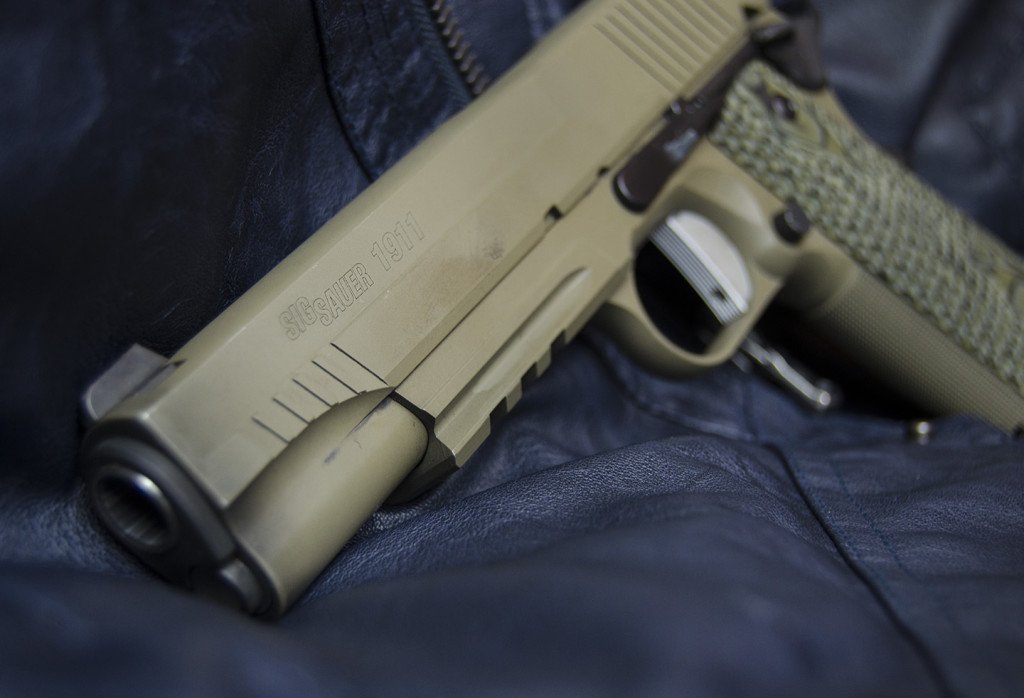
Pistol (ACP) cartridge, which was developed by JMB specifically for his new handgun. 45 is a big, fat, slow, bullet designed (partially) to knock down the hyper-aggressive Moro warriors that our soldiers faced during the Philippine-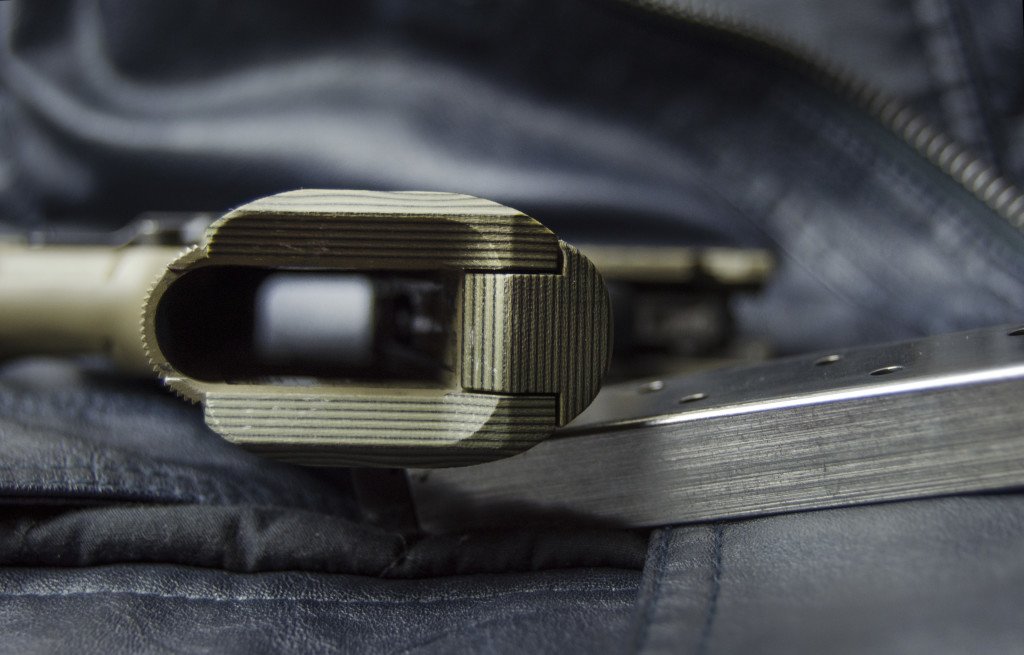 American War. .38 Long Colt, the cartridge repla
American War. .38 Long Colt, the cartridge repla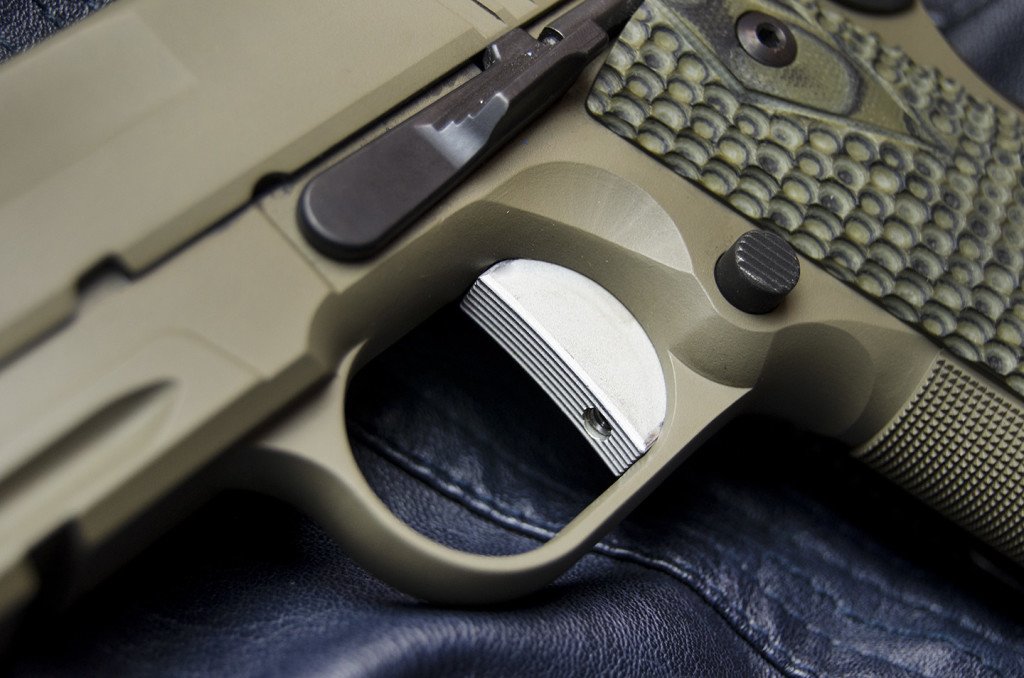 ced by .45 ACP was just no good at
ced by .45 ACP was just no good at 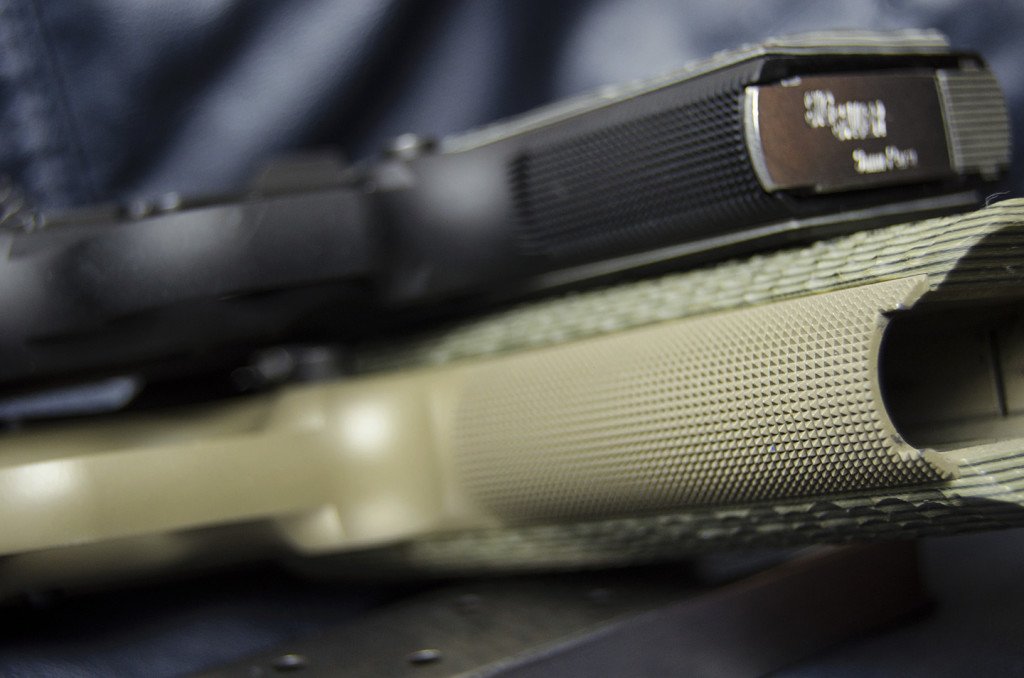 actually halting a charging man, and the Army stuck with .45 until the early ’80s, when it made the switch to 9mm.
actually halting a charging man, and the Army stuck with .45 until the early ’80s, when it made the switch to 9mm.
Sig Sauer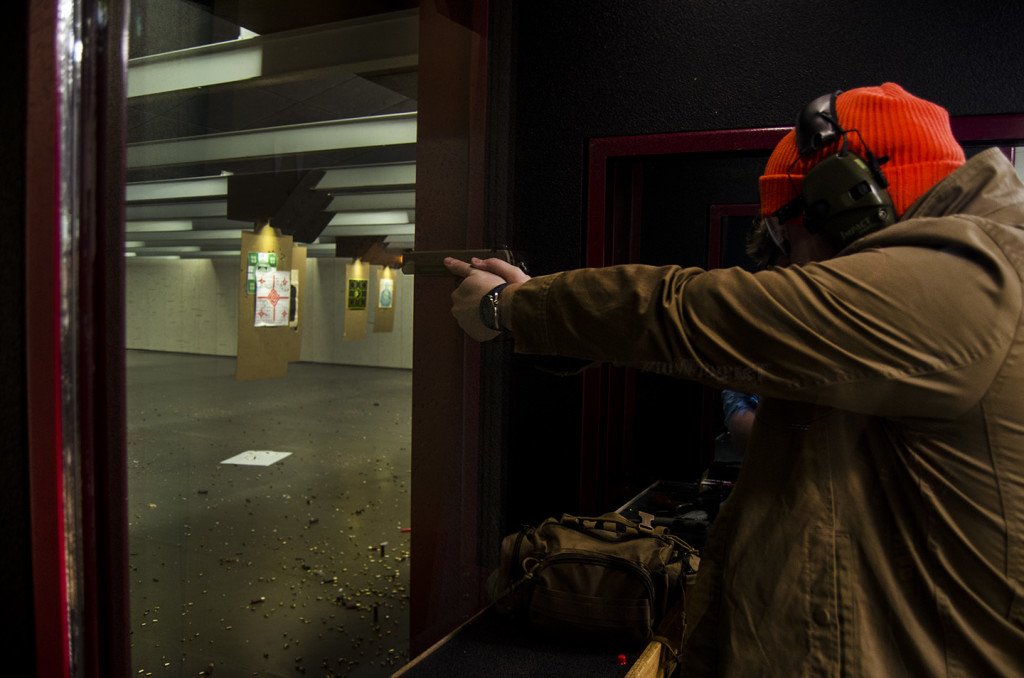
Sig is one of the most consistently high quality firearm producers in the world. Famous for big, heavy, pistols with great triggers (see the P226) and excellent modern combat rifles like the SG716, they’re a lot like BMW: precision engineered German goodness. The Scorpion series of handguns are an answer to the modern battlefield. We’ve seen FDE (flat dark earth), tan, and brown colors skyrocket in popularity since we started fighting in similarly colored environments. Scorpion pistols typically come with more features than standard models, including night sights, Hogue grips, and the Cerakote finish. The Scorpion 1911 stands out among the crowd as a well thought out update to a classic and well-loved design.
First Impressions
I’m a big fan of FDE. Maybe it’s that a lighter color makes curves, cuts, and minute details easier to see. In the case of the Scorpion 1911, I think it’s a perfect way to introduce the gun as a modernized classic: it’s a 1911, but it’s a 1911 for the 21st century. Anyone who has held a large frame all-steel pistol will know how satisfyingly weighty they are. Hold a Glock, then hold the Sig: which feels better in your hand? I’m not bashing polymer-framed handguns, but they just don’t feel like history to me. The texture on the Hogue G10 grips, the generous beavertail, and the 2.6 lb weight of this handgun combine to make an incredibly solid-feeling package. I could tell that I would enjoy shooting this gun the second I picked it up.
It’s Been Over 100 Years: Modern Innovations
Sig did a lot, but not so much that the Scorpion feels unfamiliar. Anyone who has experience with a 1911 will be right at home operating this pistol. The design team exercised restraint and a gentle touch while taking a scalpel to JMB’s genius creation.
Hogue Magwell Grip Set
I noticed this the very first time that I slammed a mag home. Ordinary 1911s have very slim magazine wells, and while they’re not hard to reload, it’s not a perfect cinch to do at warp speed. Many modern double-stack pistols have magazines that taper at the top, making them easy to reload: the Scorpion feels just like them. Sig and Hogue partnered together to create a grip set that also functions as a mainspring housing, and extends past the actual end of the frame to create a magazine well extension that facilitates fast reloading. This modification makes a noticeable difference, and I love it.
Flat-Faced Trigger
I love flat triggers. I have an Apex Tactical in my M&P, and a CMC in my AR15. The idea behind a flat trigger is that since there is no curvature, a pull at any point on the face of the trigger will be consistent in feel. Obviously, if the trigger swings rather than moves directly backward (like on an AR, for example) the effect is diminished. In the case of the 1911, however, the trigger really does go straight back. Sig claims that the the Scorpion ships with a 5 lb pull- I don’t know about that. While there’s a bit of take-up, the pull feels a lot more like my 3.5 lb CMC. It’s also finally settled in after 500 rounds. Shooting a new 1911 can work out burrs on the sear and other trigger internals, and the first 500 rounds are often considered a “settling” or “break-in” period. The stock Scorpion trigger was good out of the box, and it’s great after a few rounds down the pipe.
The Little Things
There are a few features on this gun that don’t deserve their own paragraph individually, but that I’d like to make note of:
Front Cocking Serrations: I’m one of those guys that always takes an overhand grip on the slide to drop it rather than just punching the slide release. I use the front cocking serrations for two tasks: Dropping a locked slide, and press-checking to ensure the pistol isn’t loaded.
Grip Stippling: Notice that the front of the grip, technically the frame, has a spiky little mountain range on it (pictured here with a little cousin, the Sig P938). When combined with the G10 grips, this little addition almost makes the gun sticky. I’ve shot about 250 rounds in a row barehanded and have never felt uncomfortable, but the thing is very easy to hold on to. It’s actually more uncomfortable to shoot my Talon-Gripped M&P for extended periods than it is to shoot the Scorpion, and the Scorpion grips better.
Ambi Safety: Ambi controls are a nice feature, but I doubt I’ll ever have cause to use them unless I meet a lefty who also likes to shoot.
Night Sights: I’m a big fan of Sig’s night sights, and I’m happy that they chose to include them with the Scorpion. They’re bright in the dark, and easy to pick up in the light.
Searching for Complaints
I genuinely struggled to find something bad to say about the Scorpion. I did find a few things, though. These are things that I discovered doing research, not firing the gun itself. I discovered that some people find that the Scorpion has trouble going into battery when used with the wrong mags and have had issues with the external extractor. I have shot 650 rounds through this gun without a single issue, but I’ve only used the standard Sig mags, and everything from Sig’s HD ammo to dirty Tula. My other (stupid) complaint is that I don’t like the green in the grips. I wish that Sig had shipped these with black parts/grips. Luckily, G10 magwell grip sets are available from Hogue for $99 and up. I may just replace them.
Red Hatchet Says…
It’s a big, comfy, dead-nuts accurate, modernized combat pistol. If you like shooting full-size handguns that weigh 2.6 lbs (like I do), you’re going to love this gun. If you can get over some questionable aesthetic choices and a few subtle changes to JMB’s classic, you’re going to love this gun. If you like the satisfying feeling of putting round after round through the same hole at 10 yards, you’re going to love this gun. If you experience extractor problems and failure to enter battery as a result of using the wrong mags, just send it to Sig and they’ll fix it: you’re still probably going to love this gun. There’s something about the bridge between old and new that has always appealed to me. Modern polymer-framed handguns somehow don’t convey the tremendous responsibility and lethality associated with the use of a firearm. When you hold the Scorpion, there’s almost a voice inside you saying “this thing is powerful” like feeling the shocking pickup of your first ride in a very fast car. I’m mostly a hobbyist, and don’t ever envision myself using a handgun in a combat scenario: that said, the battleship-solid feel of this pistol is as satisfying as it is sobering. I can say without a doubt that the Scorpion 1911 is my favorite handgun to shoot (so far.) It’s consistent, reliable, crisp, mean, and seriously accurate in the right hands. Go shoot one.
